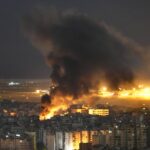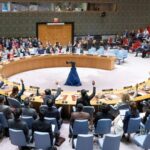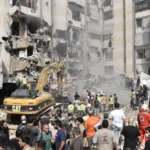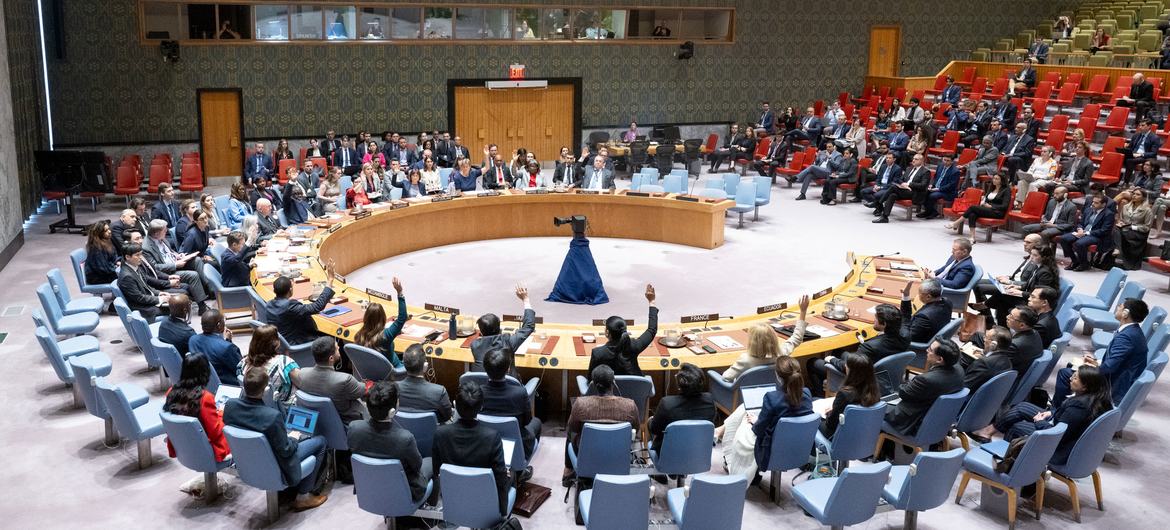The United States is taking the lead in negotiations to establish a ceasefire between Israel and Hezbollah, based on a 2006 United Nations resolution. That resolution, which helped bring a month-long war between the two sides nearly two decades ago, is being viewed as the base for a new peace agreement intended to help de-escalate the current conflict.
2006 Resolution: A Basis for Stability
Adopted in August 2006, U.N. Resolution 1701 proved a pivotal vehicle for ending deadly fighting between Hezbollah and Israel. This resolution of 19 critical provisions called for an immediate cessation of hostilities and provided a basis for medium-term and long-term stability along the Israel-Lebanon border. Although the ceasefire came under severe strain and was violated repeatedly over the years, it remains an invaluable diplomatic instrument in the security context of the region.
Key Provisions of the 2006 Resolution
Respecting the Blue Line and the Establishment of a Buffer Zone
One of the key recommendations of the 2006 resolution was to adhere to the Blue Line, the internationally recognized border and boundary between Lebanon and Israel. Furthermore, the resolution established a buffer zone stretching from the Blue Line to the Litani River, about 20 miles north of the border. This zone was to be demilitarized, and armed personnel, military assets, and weapons were banned from this area, except by the Lebanese authorities and the United Nations Interim Force in Lebanon (UNIFIL). From Armed Groups and a Weapons Ban
Resolution 1701 required the disarmament of all non-governmental armed groups in Lebanon, pointing an unmistakable finger at Hezbollah. The resolution also imposed an arms embargo, prohibiting the sale or supply of arms to Lebanon without authorization from the Lebanese government, thus reducing illegal arms flow and stabilizing the region.
No Foreign Forces Without Govt Consent
To safeguard Lebanon’s sovereignty, the resolution stipulated that no foreign forces were allowed to operate in Lebanese territory without the explicit consent of the Lebanese government. This stipulation was aimed at forestalling external interference in Lebanon’s domestic affairs and enhancing the nation’s sovereignty.
Deployment of UNIFIL and Lebanese Troops
Part of the resolution included the enlarged mandate for UNIFIL, which has observed the area since 1978. In 2006, UNIFIL’s role was enhanced to ensure that it oversees the cease-fire, monitors the withdrawal of Israeli forces, and ensures southern Lebanon remains free of unauthorized armed groups. At the same time, the resolution called on Lebanon’s national army to assume control of the southern regions, securing the area by increasing safety and stability.
Ongoing Tensions and Violations
While the ceasefire has seemingly held, there have indeed been breaches on both sides of the border, with Lebanon accusing Israel and vice versa. Lebanon has complained to the United Nations on several occasions, claiming that Israel has entered the country more than 35,000 times since its 2006 attack on the country and penetrated its airspace thousands of times. In his statement in May, Lebanese Prime Minister Najib Mikati mentioned these unresolved tensions.
More:U.S. Pushes for Ceasefire Using 2006 U.N. Resolution as Framework
On the contrary, Israel was reported to be upset over its perception of the incomplete implementation of the resolution slash agreement, including in matters related to the continued existence and arming near the borders of Hezbollah. The Israeli authorities claim that “the spirit of the 2006 agreement hasn’t been fully honored”; thus, security threats remain unchecked.
New Push for Ceasefire and Implementation
This new round of U.S.-led negotiations will establish Resolution 1701 as a basis for a new ceasefire between Israel and Hezbollah. The American side insists on its relevance but acknowledges that more enforcement and observance must be applied. It hopes to fill the loopholes in implementation and create a more solid peace mechanism that will reduce the threat of any renewal of hostilities in the future.
Now, the renewed attention to Resolution 1701 symbolizes the reasons for which it was elaborated 17 years ago. The resolution is still critical in the quest for achieving actual peace between Israel and Hezbollah. The violations and setbacks notwithstanding, the resolution remains one of the most important documents for the formation of a stable and secure border between Lebanon and Israel.















